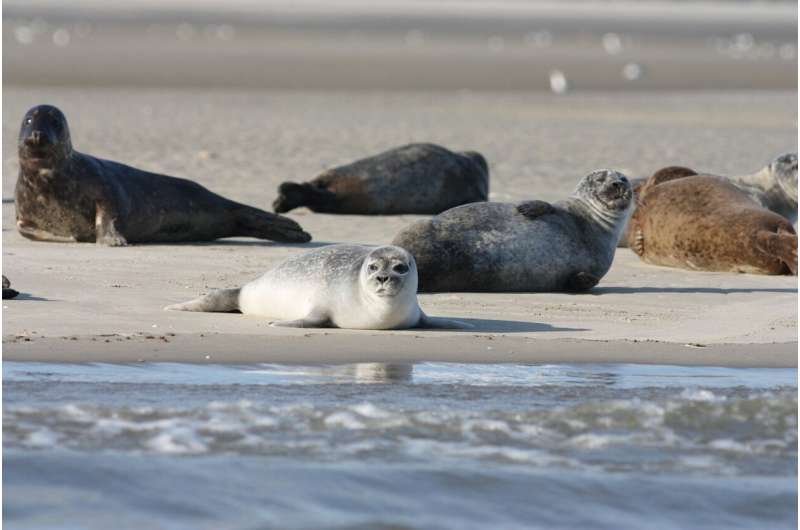What if the secret to navigating murky waters lay in the gentle swaying of tiny particles? This heartwarming story about harbor seals reveals how these playful marine mammals use their keen senses to explore their underwater world, all while engaging in a bit of marine mind games. Let’s dive into the fascinating findings from a recent study that shows just how smart these creatures really are!

Imagine splashing around in the beautiful but sometimes murky waters of the ocean. Visibility can feel limited, yet harbor seals (Phoca vitulina) glide serenely through these cloudy coastal waters, thanks in part to their impressive set of skills. Their secret? A combination of whiskers designed to sense their surroundings and, surprisingly, their vision!
Frederike Hanke from the University of Rostock in Germany found herself curious about how these clever seals navigate their underwater realm. Could they rely on their eyesight to figure out which way they were headed, even when the water was less than clear? This idea led her and her team—comprising Laura-Marie Sandow, Ann-Kathrin Thimian, and Markus Lappe—to embark on a unique journey to uncover the truth.
They published their exciting results in a recent issue of the Journal of Experimental Biology, finding that harbor seals can indeed discern their directional movement by interpreting the way particles move across their retinas. To test this astonishing skill, they devised a kind of game for their seal subjects—a memorable task that would involve some fun and fishy rewards!
Three notable seals: Nick, Luca, and Miro were eager to take part. The researchers created three mesmerizing simulations to help them along. The first simulated the open sea with streams of dots rushing toward the seals, representing objects in front of them. The second recreated the sensation of moving over a seabed, while the final one displayed the surface of the ocean gliding overhead. By gently nudging a red ball to indicate the direction they felt they were moving—whether left or right—the seals were rewarded with scrumptious sprats! Sounds like a delicious deal!
While Nick and Luca quickly caught on to the game, Miro, the newest addition to the team, took a bit longer to figure things out. Hanke described Miro as an open-minded seal, and before long, he was navigating through the tasks alongside his friends. The team diligently observed the seals as they engaged with the simulations, taking note of their choices while watching the dots dance across the screen in varying angles.
Occasionally, mistakes happened—after all, these seals are living animals with their own unique personalities. Hanke chuckled, explaining that distractions or dips in motivation could lead to small errors in judgment. However, it became clear that these intelligent creatures were more than capable of determining their direction based solely on the patterns they observed, much like they do in the great beyond of the ocean.
In even the gloomiest of waters, harbor seals are armed with the ability to gauge their movement by recognizing the flow of nearby objects. But Hanke’s explorations don’t stop here! She’s keen to find out whether these remarkable seals can use similar visual cues to figure out distances traveled, sparking curiosity about their navigation skills.
Who knew that the simple act of moving through water could reveal so much about the brilliance of these aquatic mammals? As we continue to study and understand harbor seals, their adaptability and intelligence remind us of the wonders that nature has in store.
More information:
Sandow, L. M et al. Optic flow, a rich source of optic information for harbour seals (Phoca vitulina), Journal of Experimental Biology (2025). DOI: 10.1242/jeb.250168
If you would like to see similar science posts like this, click here & share this article with your friends!



